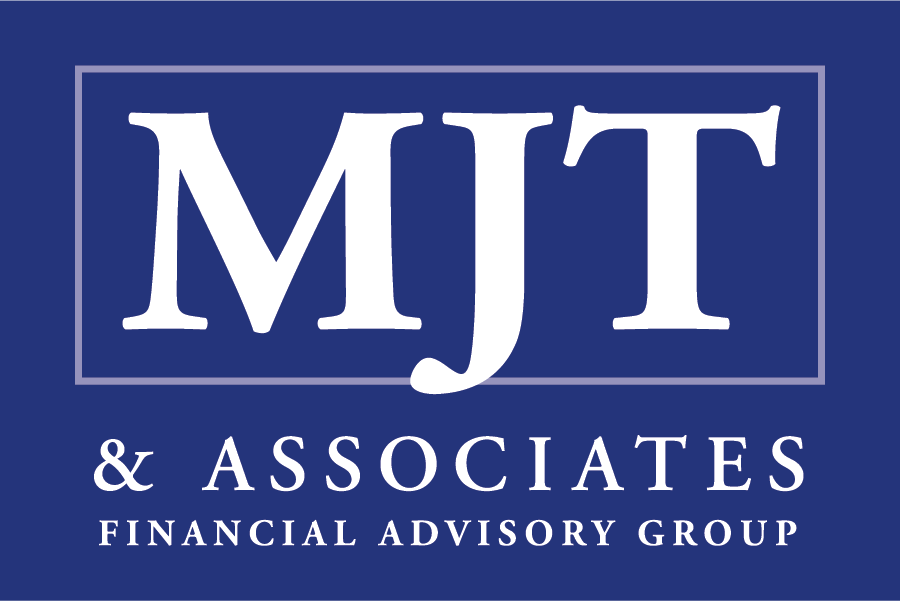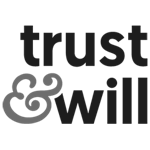Are you a parent or guardian searching for ways to save for your child's education? Look no further! In this ultimate guide to Education Savings Accounts (ESAs), we will break down everything you need to know about these flexible and tax-advantaged savings options. Whether you're planning for your child's college education or aiming to cover K-12 expenses, ESAs can offer significant benefits.
ESAs provide a means to save for education expenses while enjoying potential tax benefits. Not only can you contribute money to an ESA on a tax-free basis, but the earnings and withdrawals for qualified education expenses can also be tax-free. Understanding the definition, benefits, and how to get started with ESAs is essential to making the most of these accounts.
In this comprehensive guide, we will explain the different types of ESAs, eligibility requirements, contribution limits, investment options, and rules regarding withdrawals. We'll also provide tips on how to optimize your ESA for your educational goals and offer insights on the potential pitfalls and challenges you may encounter along the way.
Education is an investment in your child's future, and an ESA can give you the peace of mind knowing that you're taking proactive steps towards funding their education. Let's dive in and unlock the power of Education Savings Accounts!
What is an Education Savings Account
An Education Savings Account, also known as an ESA, is a tax-advantaged savings account designed to help families save for education expenses. These accounts were created to encourage parents to save for their children's education by providing tax benefits and flexibility. ESAs can be used to save for both K-12 expenses and higher education costs, making them a versatile tool for educational planning.
There are two main types of ESAs: Coverdell ESAs and 529 plans. Coverdell ESAs were introduced in 1997 and were initially known as Education IRAs. They allow individuals to contribute up to $2,000 per year per beneficiary until the beneficiary turns 18. 529 plans, on the other hand, are state-sponsored savings plans that offer tax advantages for education savings. Each state has its own 529 plan with its own features and benefits.
Benefits of Education Savings Accounts
Education Savings Accounts offer several benefits that make them an attractive option for families looking to save for education expenses. One of the most significant benefits of ESAs is the potential for tax-free growth. Contributions to an ESA are made with after-tax dollars, meaning you don't receive a tax deduction for your contributions. However, the earnings in the account can grow tax-free, and withdrawals for qualified education expenses are also tax-free.
Another advantage of ESAs is the flexibility they provide. Unlike some other education savings options, ESAs can be used for both K-12 expenses and higher education costs. This means that if you have multiple children, you can use the funds in the ESA to cover different educational needs. Additionally, ESAs can be used for a wide range of qualified expenses, including tuition, fees, books, supplies, and even certain room and board expenses.
ESAs also offer control and ownership over the funds. As the account owner, you have the authority to decide how the funds are invested. This means you can choose from a variety of investment options, allowing you to tailor the account to your risk tolerance and financial goals. Having this control can be beneficial for parents who want to actively manage their savings and potentially maximize their returns.
Types of Education Savings Accounts
As mentioned earlier, there are two main types of Education Savings Accounts: Coverdell ESAs and 529 plans. While both types of accounts offer tax advantages, they have some differences in terms of contribution limits, eligibility requirements, and investment options.
Coverdell ESAs have a maximum annual contribution limit of $2,000 per beneficiary. Contributions must be made before the beneficiary turns 18, and the funds must be used for qualified education expenses. Qualified expenses include tuition, fees, books, supplies, and certain educational equipment. One of the unique features of Coverdell ESAs is that they can be used for both K-12 expenses and higher education costs.
529 plans, on the other hand, are state-sponsored savings plans that offer tax advantages for education savings. Each state has its own 529 plan, and the features and benefits can vary. However, most 529 plans have higher contribution limits than Coverdell ESAs, typically ranging from $300,000 to $500,000. The funds in a 529 plan can be used for qualified higher education expenses, including tuition, fees, books, supplies, and room and board. Some 529 plans also offer limited flexibility for K-12 expenses.
Eligibility and Contribution Limits
To open an Education Savings Account, you need to meet certain eligibility requirements. For Coverdell ESAs, there are income limits that determine whether you can contribute to the account. As of 2021, the ability to contribute to a Coverdell ESA phases out for single filers with modified adjusted gross incomes (MAGI) between $95,000 and $110,000, and for joint filers with MAGI between $190,000 and $220,000. If your income exceeds these limits, you are not eligible to contribute to a Coverdell ESA.
529 plans, on the other hand, do not have income limits for contributors. Anyone can open a 529 plan and contribute to it, regardless of their income level. However, some states offer additional tax benefits for in-state residents, so it's worth considering the 529 plan offered by your state of residence.
In terms of contribution limits, Coverdell ESAs have a maximum annual contribution limit of $2,000 per beneficiary. This means that if you have multiple children, you can contribute up to $2,000 for each child. If you contribute more than the allowed amount, you may be subject to penalties and taxes on the excess contributions.
529 plans, on the other hand, have higher contribution limits that vary by state. Most states have limits ranging from $300,000 to $500,000 per beneficiary. Some states also offer the option to make a lump sum contribution that is treated as though it is made over a five-year period for gift tax purposes. This allows individuals to contribute a larger amount upfront without incurring gift tax consequences.
How to Open an Education Savings Account
Opening an Education Savings Account is a relatively straightforward process. To open a Coverdell ESA, you can contact a financial institution that offers these accounts, such as a bank or brokerage firm. They will guide you through the application process and provide you with the necessary forms and information.
To open a 529 plan, you will need to choose the plan offered by your state of residence or another state's plan if you prefer. Each state has its own 529 plan, and you can find information about the plans and their features on the state's website. Once you have chosen a plan, you can usually open an account online or by completing a paper application.
When opening an ESA, you will need to provide some personal information, such as your name, address, and social security number. You will also need to provide the beneficiary's information, including their name, date of birth, and social security number. Additionally, you may be required to make an initial contribution to fund the account. The specific requirements and procedures may vary depending on the financial institution or state plan you choose.
Choosing the Right Investment Options for Your ESA
One of the advantages of Education Savings Accounts is that you have control over how the funds are invested. This means you can choose from a variety of investment options based on your risk tolerance and financial goals. When selecting investments for your ESA, it's important to consider factors such as your time horizon, risk tolerance, and investment preferences.
For those with a longer time horizon, such as parents saving for their child's college education, it may be appropriate to invest in a mix of stocks and bonds. Stocks offer the potential for higher returns but also come with higher volatility. Bonds, on the other hand, provide more stability but typically offer lower returns. By diversifying your investments across different asset classes, you can potentially mitigate risk and achieve a balanced portfolio.
If you prefer a more hands-off approach, many financial institutions and state-sponsored plans offer age-based investment options. These options automatically adjust the asset allocation based on the beneficiary's age. When the child is young, the investments may be more aggressive, with a higher allocation to stocks. As the child gets closer to college age, the investments become more conservative, with a higher allocation to bonds. Age-based options can be a convenient way to ensure that your investments align with your child's educational timeline.
Another factor to consider when choosing investments for your ESA is fees. Different investment options may have different fee structures, including management fees, expense ratios, and transaction fees. These fees can impact the overall performance of your investments, so it's important to carefully review and compare the fees associated with each option.
Tax Advantages of Education Savings Accounts
One of the key benefits of Education Savings Accounts is the potential for tax advantages. Contributions to an ESA are made with after-tax dollars, so you don't receive a tax deduction for your contributions. However, the earnings in the account can grow tax-free, and withdrawals for qualified education expenses are also tax-free.
This tax-free growth can have a significant impact on the overall value of your ESA over time. By allowing your contributions to grow without being subject to taxes, you can potentially accumulate more funds for education expenses. This can be especially beneficial if you start saving early and have a long time horizon before the funds are needed.
It's important to note that the tax advantages of ESAs are subject to certain rules and limitations. Qualified education expenses include tuition, fees, books, supplies, and certain room and board expenses. However, expenses such as transportation, uniforms, and extracurricular activities are generally not considered qualified expenses. Additionally, if you withdraw funds from an ESA for non-qualified expenses, you may be subject to taxes and penalties on the earnings portion of the withdrawal.
Withdrawing Funds from an Education Savings Account
When it comes time to use the funds in your Education Savings Account, there are certain rules and considerations to keep in mind. To avoid taxes and penalties, withdrawals from an ESA must be used for qualified education expenses. These expenses can include tuition, fees, books, supplies, and certain room and board expenses.
It's important to keep receipts and records of your qualified education expenses to support your withdrawals. The IRS may require documentation to verify that the expenses were indeed qualified. Without proper documentation, you may be subject to taxes and penalties on the earnings portion of the withdrawal.
If you withdraw funds from an ESA for non-qualified expenses, you may be subject to taxes and penalties. The earnings portion of the withdrawal will be taxed as ordinary income, and you may also be subject to a 10% penalty on the earnings. It's important to carefully consider the consequences before making non-qualified withdrawals, as they can significantly reduce the overall value of your ESA.
Conclusion: Start Saving for Your Child's Education Today
Education is an investment in your child's future, and an Education Savings Account can give you the peace of mind knowing that you're taking proactive steps towards funding their education. Whether you choose a Coverdell ESA or a 529 plan, these accounts offer tax advantages and flexibility that can help you save for both K-12 expenses and higher education costs.
By understanding the definition, benefits, and how to get started with ESAs, you can make informed decisions and optimize your savings for your child's educational goals. Consider your eligibility, contribution limits, and investment options when opening an ESA. And remember to keep track of your qualified education expenses to ensure tax-free withdrawals.
Start saving for your child's education today and unlock the power of Education Savings Accounts. With proper planning and consistent contributions, you can build a solid foundation for your child's educational future. Invest in their education and invest in their success!











